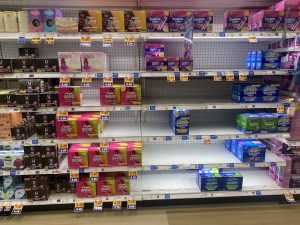Domestic manufacturing has become an even bigger story as the national election looms. This blog outlines business stories to pursue on this timely topic.
Explore innovative business investments
In her economic plan, presidential nominee Hillary Clinton made innovation a large focus of her platform. Clinton mentioned, for instance, plans to invest $10 million in “make it in America” partnerships to fund the science that would create entirely new industries. Her speech was delivered in a former automobile parts factory refitted to accommodate aerospace projects. Forward-thinking businesses that repurpose antiquated factories, as well as those that upcycle existing goods, are strong story angles.
Discuss appropriate education and training
Studies on job creation from Georgetown University state that in 2020, 30 percent of the jobs available will require an associate’s degree and only partial university training while 36 percent will not require training beyond high school. Welding, machining and toolmaking all require apprenticeships or training at high school and community colleges – not universities. This kind of insight adds depth to the business story behind making things in America.
Talk about local companies
According to the Reshoring Initiative, a nonprofit working to bring more manufacturing back to the states, reshoring has slowed somewhat. But some of the largest U.S.-based companies are still building factories on their home turf. For example, Kent International, a third-generation bicycle maker, brought part of its operations back to the Carolinas. This year, Daimler broke ground on a plant in North Charleston, adding (or planning to add) 1,300 jobs. The Reshoring Initiative’s library outlines excellent examples and coverage.
Report on the challenge—and success
Skeptics argue that cost remains a considerable deterrent for making products domestically versus overseas. While it’s important to report on the challenge, also look at success stories. In writing on domestically made toys for the Guardian Sustainable Business, I reported that the president and founder of Green Toys Inc. discovered repurposing and recycling milk jugs provided a cost-effective material for making quality toys. Because of the demand for premium, well-made U.S. items, and a growing consumer resistance to buying cheaply made goods, the Sausalito, California-based company remains hugely successful. The Reshoring Initiative offers a helpful tool reporters might use too: the Total Cost of Ownership Estimator for companies to estimate just how much it might cost to bring operations home, or keep operations domestic from the beginning.
Seek out intriguing conferences
Not all conferences work well for business reporters, but domestic manufacturing provides one area where just being there will help you feel the spirit behind the movement. People feel strongly about providing jobs for Americans, so you might find some surprisingly emotional stories at a meeting of U.S. manufacturers. A conference later this fall outlines a potential 100-day agenda for the next U.S. president on American manufacturing. Look at organizations such as SEAMS, the National Association for the U.S. Sewn Products Industry, which holds its national networking conference in October.
Reporter’s Takeaway
- Look for innovative companies that are repurposing antiquated buildings and infrastructures in order to create new products.
- Report on the types of education and training that will be required of tomorrow’s made-in-America workforce.
- Investigate the challenges involved with bringing manufacturing home, but also give examples of domestic manufacturing that works.
- Consider conferences as a way to understand the emotions behind the business train and to find new contacts and experts.











